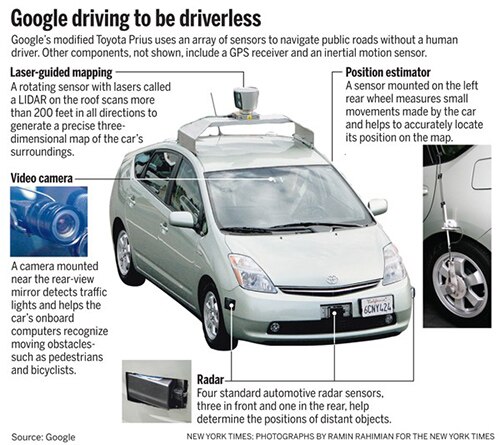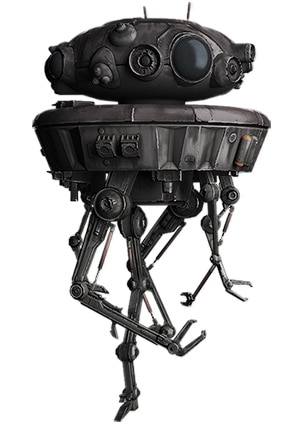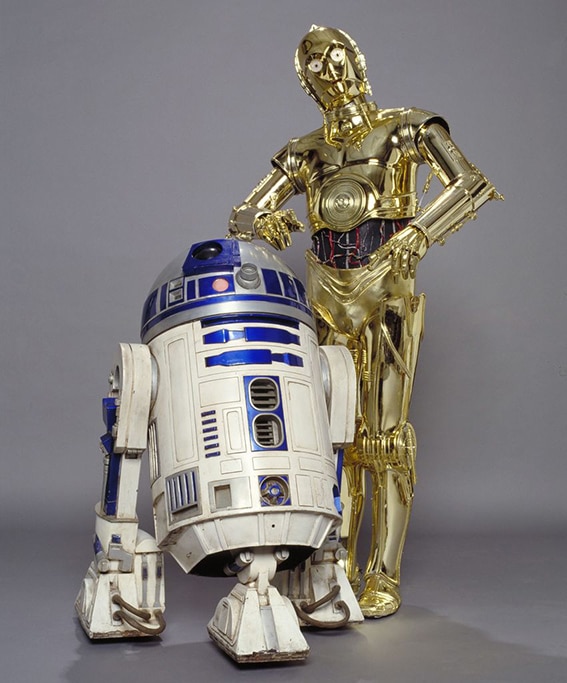Star Wars Sensors in the Real World
DigiKey 제공
2015-12-16
A long time ago in a galaxy far, far away… a world was created and introduced to millions of sci-fi fans that now has many anxiously anticipating the next release in this epic saga. As an engineer, I can’t help but think back to the original movies and the ideas created within them that are now a reality today. Unfortunately, light sabers we can still only imagine, but just focusing on droids, it’s remarkable where we are today.
Many of the sensor technologies familiar to Star Wars fans already exist today, especially those related to “droids”. Nowhere is this more evident than in the self-piloting vehicles that are being developed by several companies. For instance, Google’s autonomous car (Figure 1) uses a rotating roof-top Lidar (Light detection and ranging) camera which measures the distance of objects from the vehicle to build a 3-D map out to 200 meters, enabling the vehicle to detect potential hazards. One could use the SEN-13680 from SparkFun Electronics to test out the capabilities of Lidar on a smaller scale.

Figure 1: Google driverless car and its sensors (Courtesy of Google).
Other sensors in the Google car include a standard camera looking through the windshield which looks for potential obstacles and read road signs in addition to traffic light detection. Additionally, there are altimeters, gyroscopes, and GPS components to give the car accurate positioning data for safe operation.

Figure 2: Star Wars probe droid. (Courtesy of Wookieepedia).
Most of the sensors used for automated ground transportation can also be used in aerial vehicles. In fact, today’s drones have the ability to offer similar reconnaissance abilities to Darth Vader’s “probe droids” (Figure 2). In addition to some of the sensors mentioned above, they can be equipped with optical distance sensors, still and video cameras, and Lidar, among others. Drones today can map terrain, monitor livestock, and even track targets. In fact, the US Army is currently testing a “pocket-sized” reconnaissance drone that feeds a video signal to a chest-mounted screen on a soldier’s vest.1 These tiny drones weigh just 18 grams and have a range of just over half a mile. They carry three cameras, one being a thermal camera for night missions, which enables soldiers to scout the terrain around them for potential hostile threats.
What do these “droids” do with all of the sensor data they collect? They typically send it somewhere else. Therefore, all “droids” need some sort of communication to the outside world in order to receive their orders and to transmit the data they are tasked to collect. To this end, becoming part of the Internet of Things (IoT) may be the preferred method. Be it Wi-Fi, Bluetooth, ZigBee, or any other method, connection to the IoT is becoming more and more essential. Most of today’s robots feed data back to some central processing entity which may have the capability to process vast amounts of input from a wide variety of sources. These entities could be “big data” processors which intelligently use the information, perhaps even learning with some form of artificial intelligence (AI), to increase efficiency, safety, and reduce operational costs.

Figure 3: Star Wars droids R2-D2 and C-3PO (Courtesy of Wookieepedia).
We are far from developing the droids of Star Wars with all of their capabilities. However, a lot of the sensor technology depicted in the epic space opera exists today. Even though the robots we have may not have the absolute autonomy exhibited by R2-D2 and C-3PO, many of the sensors that enable their abilities are available today like the Z5291-ND Omron Human Sensing and Understanding module along with many more waiting to be used by robotic designers who are striving for droid-like creations.
The autonomous aspects are coming closer to reality every day. Most people have a mini version in their pocket today with Siri and Cortana. Google’s efforts in Quantum computing promise to continue to revolutionize this industry in the years to come until we have our own personal droid assistant.
Until we are engaging in conversation with our own personal droid assistants, we will continue to look to these sci-fi industries to keep imagining what tomorrow will look like and continue to embrace the engineering world that is helping to make it all a reality.
Reference
- Engelking, Carl (2015, June 1). U.S. Army Is Testing Pocket-Sized Reconnaissance Drones

면책 조항: 이 웹 사이트에서 여러 작성자 및/또는 포럼 참가자가 명시한 의견, 생각 및 견해는 DigiKey의 의견, 생각 및 견해 또는 DigiKey의 공식 정책과 관련이 없습니다.








